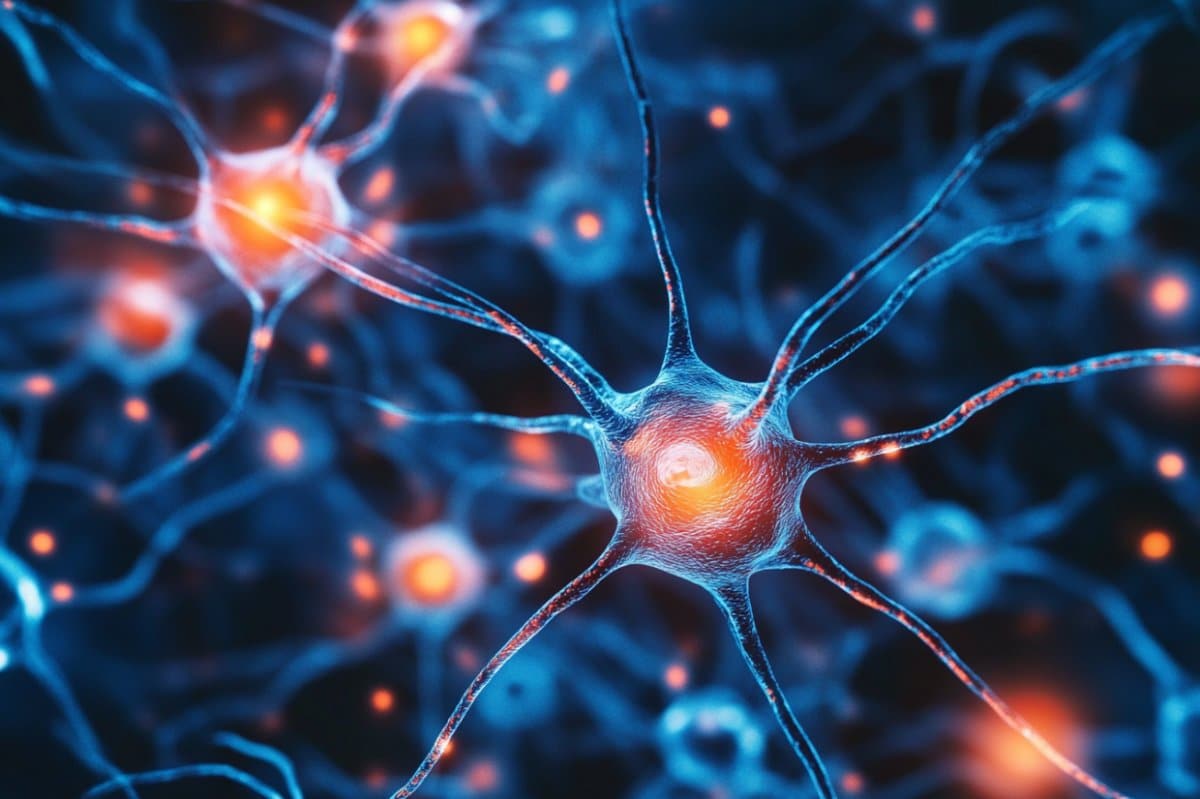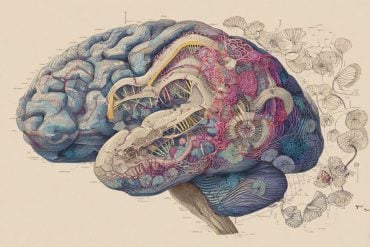Summary: Scientists have uncovered how serotonergic neurons in larval zebrafish process visual information tied to movement to determine when and how much serotonin to release. This neuromodulator fine-tunes the fish’s swimming effort, adjusting behavior based on the effectiveness of past actions.
Neurons in a key brain region only admit visual input after a swim burst ends, using a “gate” mechanism that opens post-swim to process relevant feedback. This selective gating enables the system to learn which actions lead to desired outcomes—essentially assigning credit for success.
Key Facts:
- Effort-Based Modulation: Serotonergic neurons adjust swimming vigor based on visual feedback after each movement.
- Temporal Gating: A neural “gate” admits sensory information only after a swim ends, optimizing credit assignment.
- Neuronal Rebound: Activity suppression during swimming is followed by an excitatory rebound that boosts serotonin release.
Source: HHMI
Janelia researchers are decoding how neurons carry out computations carefully calibrated to an animal’s movement and environment to precisely regulate the release of neuromodulators—chemicals that fine-tune brain activity and enable us to adapt to new situations.
The new findings could help scientists better understand how the brain enables flexible behavior and provide insight into mood disorders like depression.

Unlike neurotransmitters, which enable fast communication between neurons, neuromodulators regulate groups of neurons over slower timescales. These chemicals adjust how our brain responds to messages and help shape our behavior, mood, and thinking.
In larval zebrafish, the neuromodulator serotonin controls how hard the fish swims as changes in the environment or its own body alter the effectiveness of its effort.
Previous research from the Ahrens Lab at Janelia found that serotonergic neurons in a brain region called the dorsal raphe nucleus use visual clues to assess the effectiveness of the fish’s swimming to figure out how much effort it should exert in the future, releasing serotonin to adjust the fish’s swimming vigor.
In new research, a team led by the Ahrens Lab sought to understand how these neurons figured out when and how much serotonin to secrete. While much research has focused on how neuromodulators affect neuronal circuits, less is known about how the neuromodulatory system itself processes information.
As the fish swam in a virtual reality setup, the researchers tracked activity in the raphe using voltage sensors and neurotransmitter imaging tools developed at Janelia.
Zebrafish swim in a staccato pattern—swimming and coasting—and they found serotonergic neurons in the raphe only integrate information about their perceived motion right after a period of swimming.
Ahrens and his team determined that a “gate” allows visual information to enter the raphe: It is closed if the fish hasn’t swum and opens just after it does.
This process enables cells in the raphe to use visual information associated with the fish’s swimming effort to adjust the fish’s actions while filtering out irrelevant visual signals. Generally, this type of credit assignment—to correctly associate actions with outcomes—is at the heart of how a system learns from experience and is an active field of research in neuroscience and machine learning.
Next, the team examined how this gating works. Surprisingly, they found that swimming initially suppresses activity in the serotonergic neurons in the raphe. But, once the fish stops swimming and enters the coasting period, the suppression is removed.
This causes a rebound effect, increasing neuronal activity—much like pushing down on a balloon on a table and then releasing it, causing it to spring upwards. During this rebound phase, the gate opens, and visual information can reach the raphe.
These visual signals add to the excitation of the neurons and cause the cells to fire in proportion to the visual speed, releasing serotonin that adjusts the fish’s swimming vigor.
The new findings provide insight into how neuromodulation works in the raphe—a brain region also found in human brains—and potentially sheds light on the processes involved in other neuromodulatory systems in the brain, according to the researchers.
About this serotonin and visual neuroscience research news
Author: Nanci Bompey
Source: HHMI
Contact: Nanci Bompey – HHMI
Image: The image is credited to Neuroscience News
Original Research: Open access.
“Voltage imaging reveals circuit computations in the raphe underlying serotonin-mediated motor vigor learning” by Misha B. Ahrens et al. Neuron
Abstract
Voltage imaging reveals circuit computations in the raphe underlying serotonin-mediated motor vigor learning
As animals adapt to new situations, neuromodulation is a potent way to alter behavior, yet mechanisms by which neuromodulatory nuclei compute during behavior are underexplored.
The serotonergic raphe supports motor learning in larval zebrafish by visually detecting distance traveled during swims, encoding action effectiveness, and modulating motor vigor.
We tracked the raphe’s input-output computations at millisecond timescales using voltage and neurotransmitter imaging and found that swimming opens a gate for visual input to cause spiking in serotonergic neurons, enabling the encoding of action outcomes and filtering out learning-irrelevant visual signals.
Specifically, swim commands initially inhibited serotonergic neurons via γ-aminobutyric acid (GABA). Immediately after, membrane voltage increased via post-inhibitory rebound, allowing swim-induced visual motion to evoke firing through glutamate, triggering serotonin release to modulate future motor vigor.
Ablating local GABAergic neurons impaired raphe coding and motor learning.
Thus, serotonergic neuromodulation arises from action-outcome coincidence detection within the raphe.






